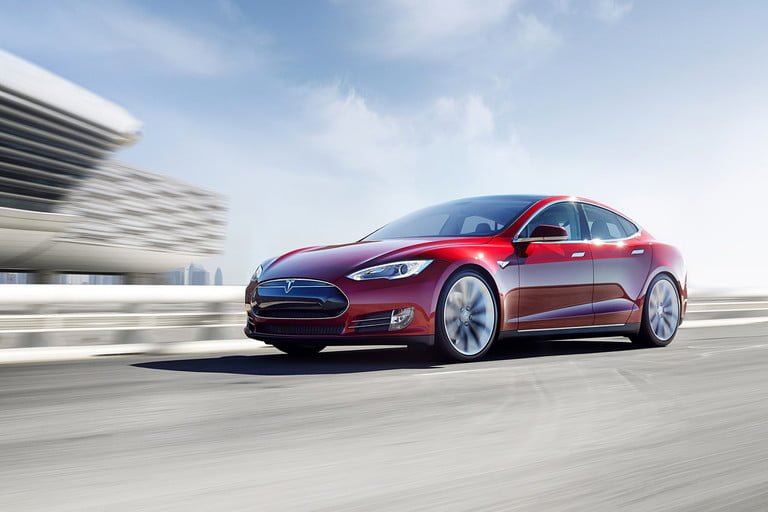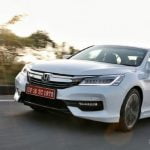

In large part, this is happening because Lithium-ion batteries are the standard for rechargeable cells. They’re used in everything from cameras and phones to EVs. In addition to being expensive and dependent on scarce resources, Li-ion batteries carry a danger of overheating and catching fire or even exploding. That’s why airlines don’t want these batteries in their cargo holds. On top of that, building new factories to make Lithium-ion batteries is expensive and time-consuming. Tesla invested $5 billion in its Nevada Gigafactory to produce batteries for the Model 3 in-house. Tesla’s capacity is at about 24 GWh today, and up to 35 GWh when completed in the next year.
What’s needed is a new battery architecture that’s easier to make. Ideally, the new battery design would have higher energy density and a faster recharge time to make it ideal for vehicle use.
You already know what comes next: a company called XNRGI based near Portland, Oregon says they have the answer. That’s not uncommon in itself. Many people have claimed to have a miracle battery, but they always seem to say they can’t tell you about it yet.
The difference with XNRGI is that they’ve got a portfolio of published patents tied directly to their Powerchip battery technology, and they’ve applied for several more. The company has also received funding from the U.S. Department of Energy for their research. With patent protection and funding in place, XNRGI is eager to tell the world what they’ve got.
“We believe that we can now simultaneously address all of the issues with Lithium-ion batteries,” said XNRGI CEO Chris D’Couto.
Contents
OLDER TECH GETS A NEW PURPOSE
The key difference between a conventional Lithium-ion battery and an XNRGI Powerchip battery is its composition. Where conventional Lithium-ion batteries use a graphite slurry on a two-dimensional conductor as a building material, the XNRGI battery uses lithium metal in a three-dimensional porous silicon wafer. There’s nothing new or different about the wafers; they are the same discs that have been made for decades by the semiconductor industry.

“We’re taking proven chip manufacturing steps and applying them to this battery,” D’Couto said. “We’re taking something from one industry and applying it to another industry. We’re not inventing anything on that front. We can buy the wafers, so we don’t have the large capital investment in a factory.”
The best part is that XNRGI batteries are made with older, thicker wafers that are no longer in demand. Worldwide infrastructure already exists to manufacture these wafers cheaply, and in great quantity.
THE ADVANTAGE OF SILICON WAFERS
The advantage of using silicon wafers to build a battery depends on another well-established semiconductor process. The XNRGI design uses perforated wafers to create a waffle-like surface. Each 12-inch silicon disc can carry up to 160 million microscopic pores. Then the wafers are coated with a non-conductive surface on one side. The other side of the wafer is coated with a conductive metal to carry the electrical current.
“The metal coatings we use are taken from the chip industry,” D’Couto said, “and the insulating coatings are taken from the chip industry and used here. We are not inventing anything on the process side.”
The porous nature of the wafer increases the total surface area of the battery by up to 70 times compared to a two-dimensional surface. Each pore is physically separated from its neighbors, which helps eliminate internal short-circuits and helps the battery resist degradation over time and use.
“Each of these little holes is effectively a very tiny battery,” D’Couto observed. “When any of those individually fail, the failure doesn’t propagate. This architecture makes the battery completely safe by preventing thermal runaway and explosions.”
IMPROVED ENERGY DENSITY AND CAPACITY
XNRGI’s wafer technology is designed to go on the anode side of a battery. When a battery is fully charged, the anode is like a bucket of electrons. As the battery discharges, the electrons flow through the circuit to the cathode side of the battery. When the battery is recharged, the anode bucket refills.
“Today when you talk about a Lithium-ion battery, it’s made of lithium intercalatedwith graphite,” D’Couto explained. “Since the inception of lithium-ion batteries, graphite has been used on the anode side to provide a parking spot for the lithium ions to land and take off.”

One huge advantage of the porous silicon wafer design is that the XNRGI anode has 70 times more surface area than a graphite anode and uses pure lithium metal, giving the Powerchip’s anode about 10 times the energy density of existing lithium-ion battery anodes.
“We get more energy density because of the three-dimensional increase in surface area,” D’Couto stated.
LESS DENDRITE GROWTH FOR LONGER BATTERY LIFE
One reason that rechargeable batteries degrade over time is that as the anode goes through repeated discharge and charge cycles, it gets a chemical buildup on the anode surface. This buildup is called a “dendrite” and it looks like a limestone stalactite. Dendrites can eventually pierce the physical separator between the anode and the cathode and short out the battery.
“When the dendrite punches through the separator, you get a rapid failure of the battery,” D’Couto explained.

Lithium ions also carry other materials that build up like plaque on the separator between the anode and cathode sides of the battery, essentially clogging up the battery and reducing performance. The XNRGI anode resists dendrite formation and extends battery life because of the non-conductive coating on the silicon wafer. The elements carried along with the lithium ions don’t stick to that surface and so cannot easily form dendrites or build up plaque.
D’Couto estimates that an XNRGI Powerchip batter will offer three to five times longer service life than a Lithium-ion battery can achieve today.
REDUCED RECHARGE TIME AND LONGER RANGE
The increased surface area inside a Powerchip means the battery can discharge and recharge much more quickly than conventional Lithium-ion cells. That means more power is available when you’re driving. More importantly, it means quicker recharging.
According to D’Couto, the Powerchip anode is capable of achieving an 80% recharge from empty in 15 minutes. The more common 10% to 90% recharge is also targeted at 15 minutes. In addition to fast charging, XNRGI estimates that Powerchip batteries will increase EV range up to 280% compared to a conventional Lithium-ion battery pack of the same weight. For reference, that means a current EV with 250 miles of range (as many have) would have a 700-mile range.
The XNRGI battery is also much lighter than today’s cells. Automakers could choose to make lighter and more efficient EVs, or put more batteries into the car for even longer range at the existing weight.
WHEN WILL WE SEE IT?
Right now XNRGI is working with companies that use every kind of battery from small consumer electronics to automakers and even grid-level utilities. The company anticipates consumer product rollout and licensing agreements to be finalized over the next two to five years depending on the battery application.
“We expect our batteries to be used in mobility products like motorbikes, scooters, drones, robots, and more in 2020,” D’Couto projected. “In EVs, it will likely be 2022 or 2023 in some limited volume, then high volume EV adoption in 2024. That is about the norm for the automotive industry after their extensive testing.”
The advent of safe, quick-charging, long-lasting, and long-range battery technology is likely to be a game-changer for the EV industry. In retrospect, with scientists all over the world researching better battery technology, perhaps we shouldn’t be surprised that someone found it.
[“source=digitaltrends”]


